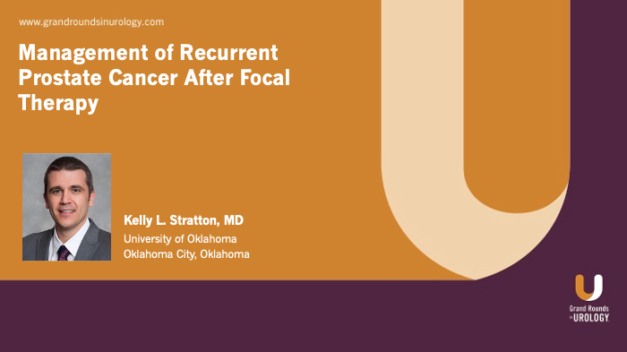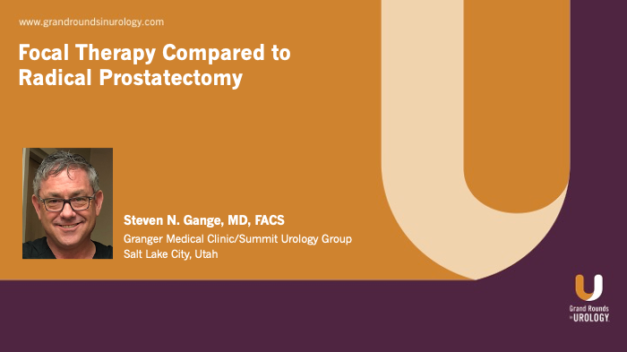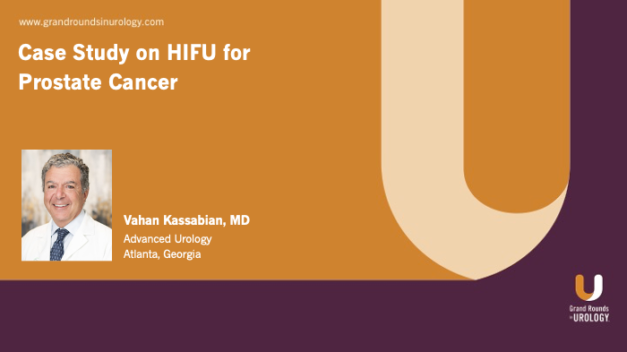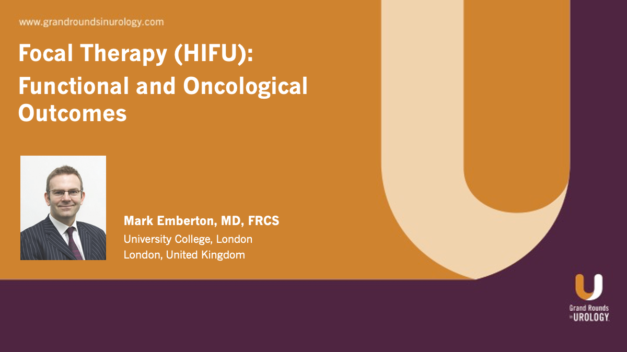Cancer Control in 1379 Men Undergoing HIFU: A Multi-institute 15-year Experience
Mark Emberton, MD, FRCS, Professor of Interventional Oncology at University College London, summarizes the design and findings of a 15-year multi-institute study of high-intensity focused ultrasound (HIFU) in patients with nonmetastatic prostate cancer. After an introduction from E. David Crawford, MD, Professor of Urology at the University of California, San Diego, and Editor-in-Chief of Grand Rounds in Urology, Dr. Emberton notes that the results of this 15-year study resulted in a wave of positive press about HIFU in popular outlets, observing that this widespread enthusiasm is due not just to HIFU’s efficacy, but its safety and adverse event profile as well. He then details the design of the study, beginning with the patient profile. Noting that outcomes in prostate cancer treatment are largely dependent on the risk profile of the patient, Dr. Emberton explains that in this study the average patient age was 66, ⅕ of patients had a PSA greater than 10, the average prostate volume was relatively low, the majority of patients were Gleason 3+4, and the majority of patients were T2. He mentions that intervention varied, and that while the majority of patients had quadrant ablation, about ⅓ had hemiablation. Dr. Emberton then considers the outcomes, observing that the “headline” of the study was the 83% 5-year failure-free survival for intermediate-risk disease. He also highlights that only 0.5% of patients experienced greater than 2 adverse events. Dr. Emberton discusses some supplementary data, emphasizing that if a clinician commits to HIFU, they also commit to retreating a subset of patients. He concludes that HIFU is very safe and that the data suggests that the majority of eligible patients with intermediate-risk disease can defer or avoid radical therapy with HIFU.
Read More









